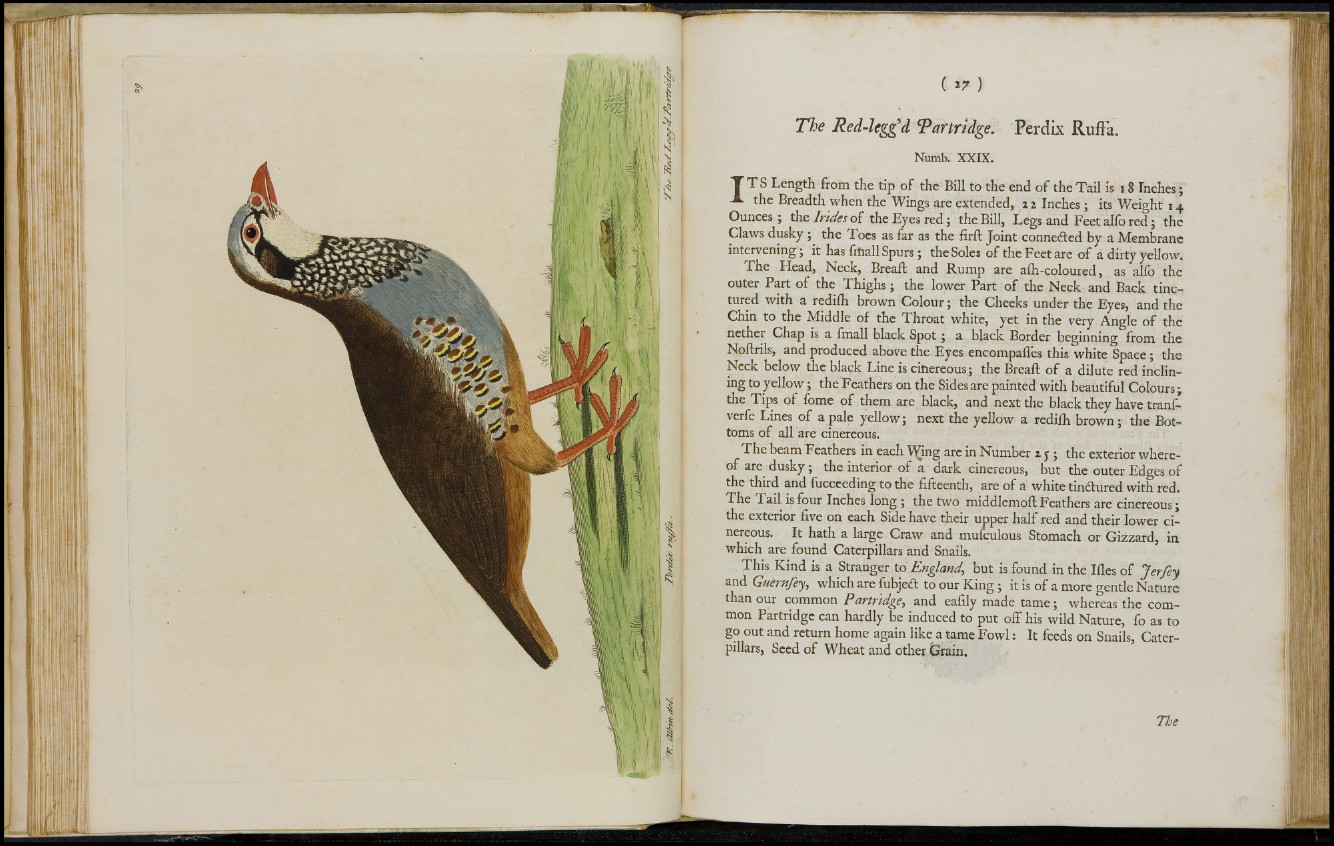
The Red-legg’d 'Partridge. Perdix Ruffa.
Numb. XXIX.
T T S Length from the tip of the Bill to the end of the Tail is 1 8 Inches;
-I. the Breadth when the Wings are extended, n Inches; its Weight 14
Ounces; the Irtdes of the Eyes red; the Bill, Legs and Feet alio red; the
Claws dusky; the Toes as far as the firft Joint connected by a Membrane
intervening; it has {mail Spurs; the Soles of the Feet are of a dirty yellow.
The Head, Neck, Breaft and Rump are aih-coloured, as alio the
outer Part of the Thighs; the lower Part of the Neck and Back tinctured
with a rediih brown Colour; the Cheeks under the Eyes, and the
Chin to the Middle of the Throat white, yet in the very Angle of the
nether Chap is a finall black Spot; a black Border beginning from the
Noftrils, and produced above the Eyes encompafles this white Space; the
Neck below the black Line is cinereous; the Breaft of a dilute red inclin-
ing to yellow; the Feathers on the Sides are painted with beautiful Colours;
Tips of fome of them are black, and next the black they have trani-
verfe Lines of a pale yellow; next the yellow a rediih brown; the Bottoms
of all are cinereous.
The beam Feathers in each ‘V^ing are in Number zy ; the exterior whereof
are dusky; the interior of a dark cinereous, but the outer Edges of
the third and fuccceding to the fifteenth, are of a white tindured with red.
The Tail is four Inches long; the two middlemoft Feathers are cinereous;
the exterior five on each Side have their upper half red and their lower cinereous.
It hath a large Craw and mufculous Stomach or Gizzard, in
which are found Caterpillars and Snails.
This Kind is a Stranger to England,, but is found in the Iiles of Jerfey
and Guernfey, which are fubjed to our King ; it is of a more gentle Nature
than our common Partrtdge, and eafily made tame; whereas the common
Partridge can hardly be induced to put off his wild Nature, fo as to
go out and return home again like a tame Fowl: It feeds on Snails, Caterpillars,
Seed of Wheat and othejf Grain.